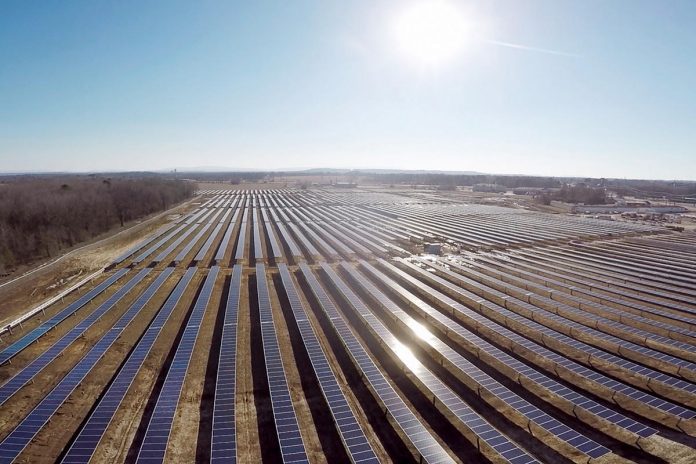China has ordered power transmission firms to connect a minimum of 90 gigawatts (GW) of wind and solar capacity to the grid this year, the National Energy Administration said on Thursday, as part of a new policy initiative aimed at meeting its low-carbon targets.
The NEA also said it will set targets for the transmission of renewable power rather than the construction of new capacity in a bid to avoid waste and ensure that wind and solar plants can sell all their electricity on the market.
China, the world’s biggest greenhouse gas emitter, has vowed to increase its non-fossil fuel energy consumption to around 20% of primary energy use by 2025 and to around 25% by 2030.
“China will no longer issue annual targets for renewable capacity, but will give forecasted renewable power consumption and guide local governments to arrange construction of new projects, as well as promote cross-region renewable power trade,” the NEA said in the statement.
The new guideline will put more pressure on grid firms to increase the availability and market access for clean energy, as the country has been striving to avoid a rise in the rate of curtailment, an industry term for the electricity capacity that is wasted because not all of the output cannot be delivered to customers.
Beijing has targeted to step up power generation from solar and wind plants to around 11% of total power consumption in 2021, from 9.7% in 2020.
As of end 2020, China had total installed solar and wind capacity of 535 GW.
Grid firms will be encouraged to accept more renewables in addition to the minimum 90 GW capacity, as long as the projects are equipped with power storage or peak-shaving capacity which would help ensure stability of the grid system.
The statement on Thursday also urged local governments to ease “irrational burdens” on renewable developers and to roll out favourable land and financial policies to support the projects.
China to add at least 90 GW wind and solar capacity to the grid in 2021
China's NEA also said it will set targets for the transmission of renewable power rather than the construction of new capacity in a bid to avoid waste and ensure that wind and solar plants can sell all their electricity on the market.
Source:Energyworld






